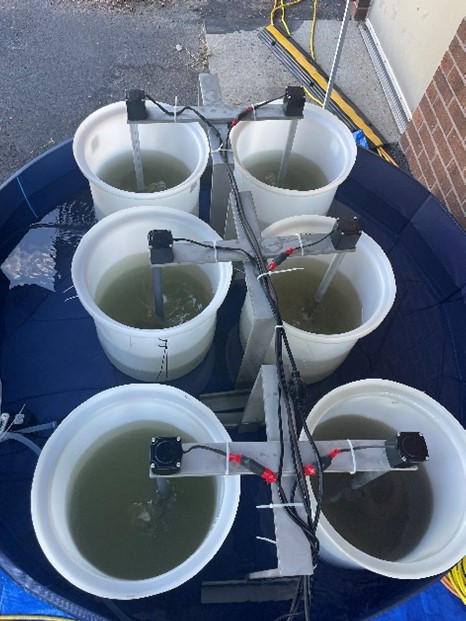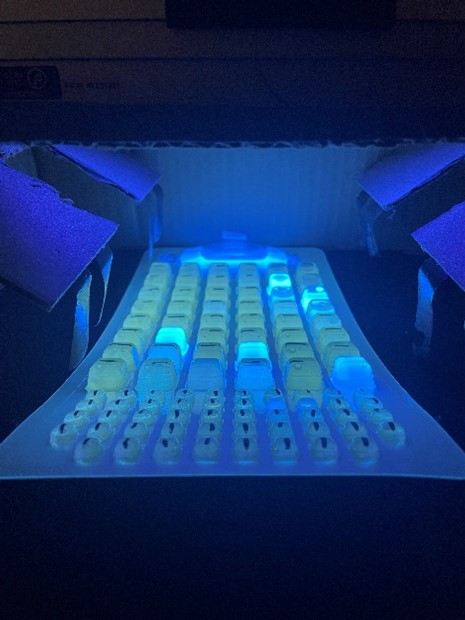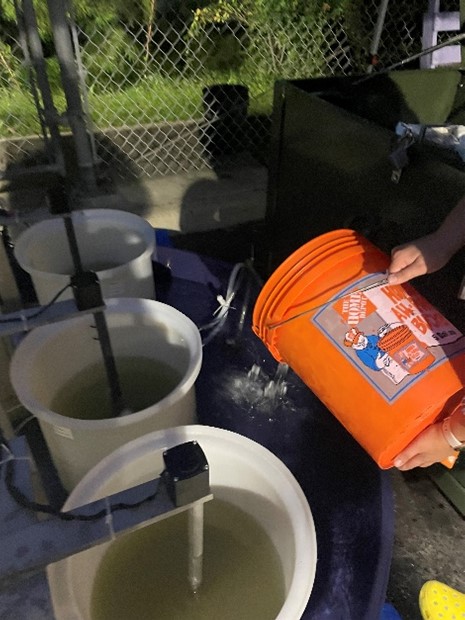Written by Hunter White, Published on January 29, 2024
For those of us who cherish the waters of Hampton Roads, the very thought of a sewage spill can be unsettling. But did you know that with sensitive DNA technology, HRSD scientists are able to safeguard the health of our waterways?
In HRSD’s ongoing commitment to maintain the cleanliness of our local waterways, HRSD recognizes that sewage spills, though unfortunate, are a reality. While HRSD does everything we can to reduce the risk of a spill occurring, there are circumstances that are out of our control, such as inflow/infiltration (when rainwater or groundwater enters the sanitary sewer system), corrosive soils, saltwater intrusion, and extreme weather. When sewage spills occur, they have the potential to negatively impact both our environment and public health. This is where our Water Quality (WQ) department steps in, using advanced technologies, such as DNA-based markers, to tackle these challenges as effectively as possible. HRSD staff work with the cities throughout Hampton Roads, by conducting routine sampling events. During these events, HRSD staff survey the surrounding water bodies in the general area of concern, to determine if we have infrastructure failures that could be impacting the waterway. HRSD and the collective service-area cities stay on top of infrastructure defects and are able to get ahead of these issues before they become a problem.

The Role of DNA-based markers in Sewage Spill Response:
DNA-based markers offer a glimpse into the world of water contaminants. How do they work? There are certain DNA-based markers, such as HF183, that specifically detect sewage, providing valuable data in near real-time. Human associated markers help us to differentiate between human sources of contamination (sewage) versus wildlife sources of fecal contamination (not due to sewage release).
Challenges of Sewer Pipe failures:
Sewer pipe failures can lead to an unintended release of untreated or partially treated wastewater into our waterways. It is the WQ department’s job to ensure the cleanliness of our local waters. The WQ team executes this by completing routine sampling events where spills occur. HRSD’s scientists are able to use DNA-based markers to determine the extent and duration of impact when a spill occurs.
But why is HRSD concerned with the level of pathogens detected in the waterway after a spill? Sewage spills release pathogens into local waterways which have the potential to cause ecological disturbances and health concerns for the communities affected. HRSD’s concern for viral and bacterial detection in the waterway is important for the safety of wildlife and human health. For HRSD's WQ department, responding efficiently and effectively to these spills is crucial.

The HF183 Guidance Document:
HRSD has taken the initiative to create a comprehensive guide that will map out the specifics of using DNA-based markers. What is our vision? To ensure that our local water bodies rebound quickly after a spill, without prolonged delays to become swimmable and fishable again.
Bridging the Knowledge Gap Through Research:
In order to create an effective guidance document, we needed to collect more information on what happens to DNA-based markers and human pathogens once they are released into a waterway. This led to the creation of the Norovirus Decay Study. This research was designed to simulate a sewage spill in specific water conditions. HRSD’s scientists decided to focus on the decay of norovirus, due to this virus being a major culprit of waterborne gastro-intestinal infection.
Insights from the Study:
While we don't want to give away too much just yet, we can promise that the results from this study will be eye-opening and informative to the public. The data from this study will be able to help our WQ team determine the persistence of human pathogens such as norovirus following a sewage spill. These insights will directly inform our forthcoming DNA-based genetic marker guidance document, ensuring it's both comprehensive and actionable.
Looking Forward:
As the research concludes and our scientists complete their analysis of the data, we urge everyone to stay tuned. The results promise not only to enhance our response to sewage spills in the Hampton Roads area, but also to provide research for others to follow.
